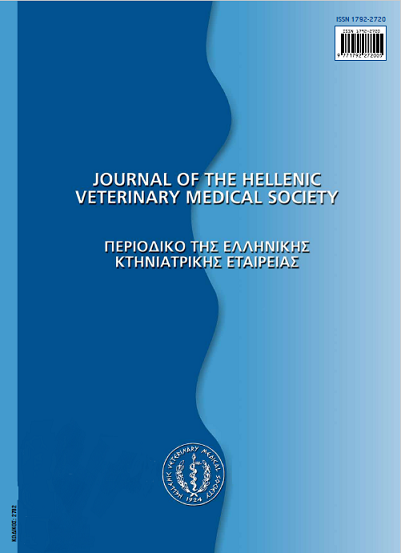Suspected toxicity by biological waste and air sac nematode infestation in a free-living peregrine falcon (Falco peregrinus)

Abstract
This case report describes an uncommon complex of mortality in a free living peregrine falcon (Falco peregrinus). The bird was found rinsed with biologic waste and the integument was mildly inflamed. No respiratory signs were detected at first. In addition, no alterations were detected during. During orthopaedic, neurologic, ophthalmologic and radiographic examinations. Parasitological pharyngeal and faecal examination revealed Capillaria spp. and Serratospiculum spp. eggs. The therapeutic scheme included stress reduction, supportive therapy with fluids, antifungals, antibiotics, anti-inflammatory, antiparasitic agents and nutritional management. Cleaning with dishwashing gel to remove the biological waste took place, but its removal was partial. Despite the intensive care, the patient developed respiratory distress and succumbed on the fifth day of hospitalization. Pathological examination revealed adult Serratospiculum tendo parasites in the air sacs and Capillaria spp. in the large intestine. Bacteriological and mycological cultures revealed significant growth of Klebsiella pneumoniae isolated from the skin, heart, lung, liver, kidney and intestine and a mild presence of Candida albicans in the large intestine. Their probable role was judged as secondary. Mild multifocal haemorrhages with heterophilic and lymphohistiocytic infiltrates, fibrin and rod‑like bacteria were detected in the skin histopathologically, confirming the clinical integument inflammation. Cause of death was asphyxia caused by oedema, haemorrhages and blood congestion of the lung. The contribution of S. tendo in the initial spill event and case evolution is discussed. This unusual case highlights the complexity of the wildlife cases, with which avian or small animal clinicians (consulting rehabilitation centres or falconers) might be confronted. Although the application of ancillary and advanced diagnostic tools, the in-depth knowledge of the species and the intensive monitoring are important, this might lead to an unrewarding outcome. Financial constraints in wildlife casualty cases urge the critical choice of diagnostic, therapeutic and post-mortem laboratory testing. Serratospiculum tendo should be considered in the differential diagnosis of acute respiratory distress in free-living peregrine falcons, presented in rehabilitation centres or in private practise by falconers in Greece and Europe.
Article Details
- How to Cite
-
AZMANIS (Π.Ν. ΑΖΜΑΝΗΣ) P. N., KRAUTWALD-JUNGHANNS, M.-E., & SCHMIDT, V. (2017). Suspected toxicity by biological waste and air sac nematode infestation in a free-living peregrine falcon (Falco peregrinus). Journal of the Hellenic Veterinary Medical Society, 65(4), 243–256. https://doi.org/10.12681/jhvms.15540
- Issue
- Vol. 65 No. 4 (2014)
- Section
- Research Articles
Authors who publish with this journal agree to the following terms:
· Authors retain copyright and grant the journal right of first publication with the work simultaneously licensed under a Creative Commons Attribution Non-Commercial License that allows others to share the work with an acknowledgement of the work's authorship and initial publication in this journal.
· Authors are able to enter into separate, additional contractual arrangements for the non-exclusive distribution of the journal's published version of the work (e.g. post it to an institutional repository or publish it in a book), with an acknowledgement of its initial publication in this journal.
· Authors are permitted and encouraged to post their work online (preferably in institutional repositories or on their website) prior to and during the submission process, as it can lead to productive exchanges, as well as earlier and greater citation of published work.


